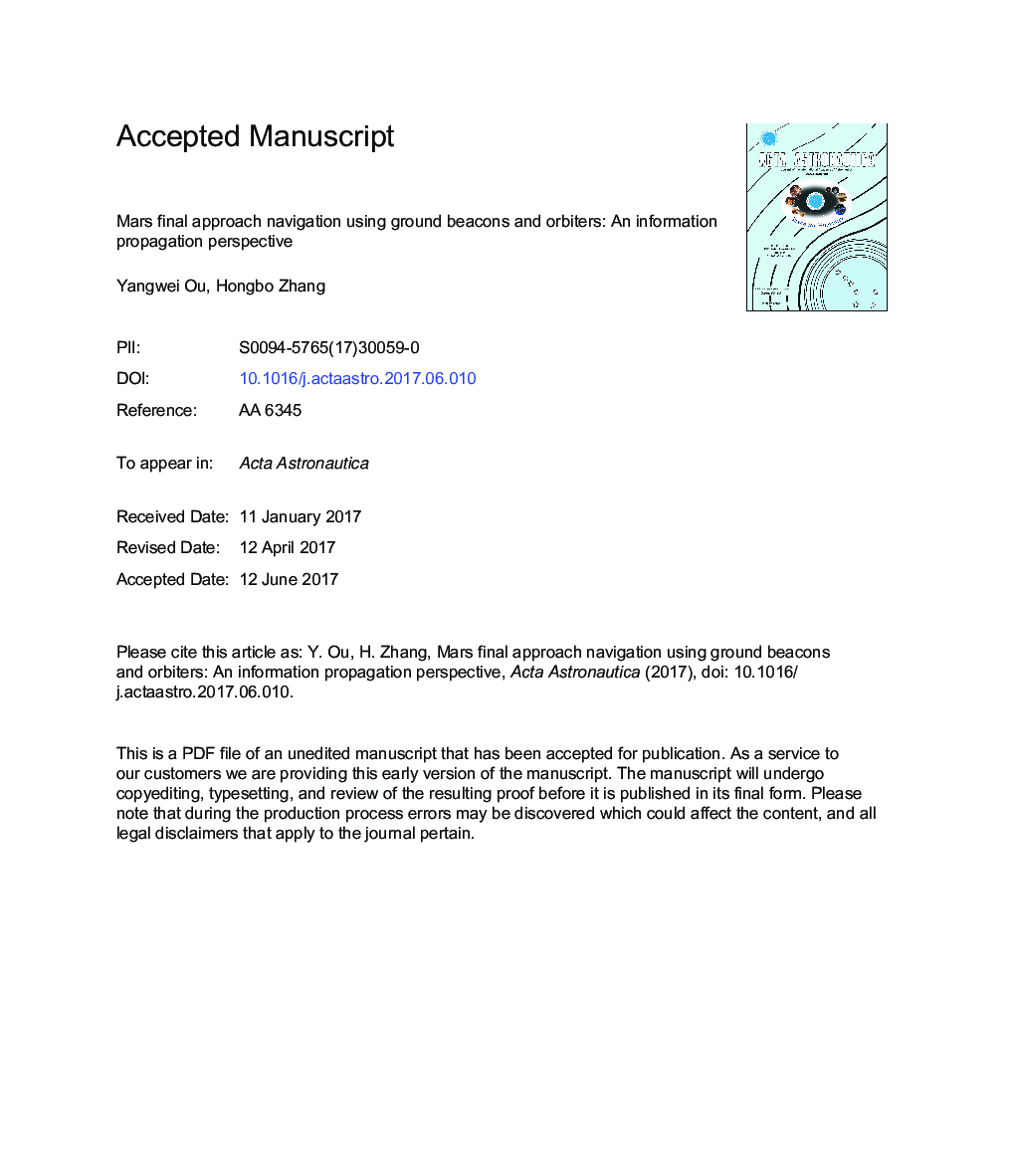| Article ID | Journal | Published Year | Pages | File Type |
|---|---|---|---|---|
| 5472350 | Acta Astronautica | 2017 | 33 Pages |
Abstract
In this paper, the Mars final approach navigation is fulfilled using radiometric measurements from ground-based beacons and orbiters. In the navigation system, the beacons are fixed on the surface of the Mars and orbiters can be phased to cooperate with the probe. The trajectory of the Mars probe and the true anomalies of the orbiters are the design variables that should be optimized. The propagation process of the Fisher information in dynamical system is clarified, and the Fisher information matrix (FIM) at the final time contains the whole information accumulated from the measurements. The system's observability is optimized through maximizing the eigenvalues of the information matrix. Furthermore, the optimal geometrical configurations with three and four measurements are analytically solved for the first time. In simulations, an unscented Kalman filter (UKF) is applied to examine the navigation performance in different scenarios in which three and four measurements are applied. The results show that the position and velocity estimation accuracy can reach 10Â m and 0.01Â m/s respectively. The Fisher information increases the most when the geometrical configuration is in the vicinity of the optimal configuration.
Related Topics
Physical Sciences and Engineering
Engineering
Aerospace Engineering
Authors
Yangwei Ou, Hongbo Zhang,
